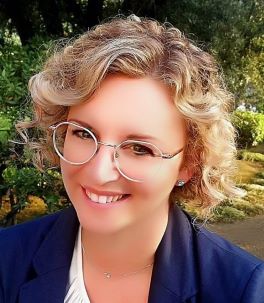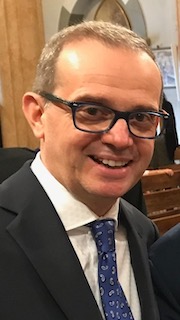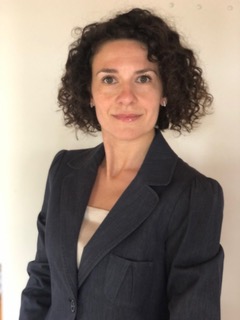Studying at the University of Verona
Here you can find information on the organisational aspects of the Programme, lecture timetables, learning activities and useful contact details for your time at the University, from enrolment to graduation.
Academic calendar
The academic calendar shows the deadlines and scheduled events that are relevant to students, teaching and technical-administrative staff of the University. Public holidays and University closures are also indicated. The academic year normally begins on 1 October each year and ends on 30 September of the following year.
Course calendar
The Academic Calendar sets out the degree programme lecture and exam timetables, as well as the relevant university closure dates..
| Period | From | To |
|---|---|---|
| primo semestre (lauree magistrali) | Oct 5, 2020 | Dec 23, 2020 |
| secondo semestre (lauree magistrali) | Mar 1, 2021 | Jun 1, 2021 |
| Session | From | To |
|---|---|---|
| sessione invernale | Jan 11, 2021 | Feb 12, 2021 |
| sessione estiva | Jun 7, 2021 | Jul 23, 2021 |
| sessione autunnale | Aug 23, 2021 | Sep 17, 2021 |
| Session | From | To |
|---|---|---|
| sessione autunnale (validità a.a. 2019/20) | Dec 9, 2020 | Dec 11, 2020 |
| sessione invernale (validità a.a. 2019/20) | Apr 7, 2021 | Apr 9, 2021 |
| sessione estiva (validità a.a. 2020/21) | Sep 6, 2021 | Sep 8, 2021 |
| Period | From | To |
|---|---|---|
| Vacanze di Natale | Dec 24, 2020 | Jan 6, 2021 |
| Vacanze di Pasqua | Apr 3, 2021 | Apr 6, 2021 |
| Vacanze estive | Aug 9, 2021 | Aug 15, 2021 |
Exam calendar
Exam dates and rounds are managed by the relevant Economics Teaching and Student Services Unit.
To view all the exam sessions available, please use the Exam dashboard on ESSE3.
If you forgot your login details or have problems logging in, please contact the relevant IT HelpDesk, or check the login details recovery web page.
Should you have any doubts or questions, please check the Enrollment FAQs
Academic staff
 mariacaterina.baruffi@univr.it
mariacaterina.baruffi@univr.it
 silvano.corbella@univr.it
silvano.corbella@univr.it
 marco.giusti@univr.it
marco.giusti@univr.it
 martina.menon@univr.it
martina.menon@univr.it
 francesca.rossignoli@univr.it
francesca.rossignoli@univr.it
 0444 393941 (Ufficio Vicenza) 0458028261 (Ufficio Verona)
0444 393941 (Ufficio Vicenza) 0458028261 (Ufficio Verona)

Santi Flavio
 flavio.santi@univr.it
flavio.santi@univr.it
 045 802 8239
045 802 8239

Vannucci Virginia
 virginia.vannucci@univr.it
virginia.vannucci@univr.it
Study Plan
The Study Plan includes all modules, teaching and learning activities that each student will need to undertake during their time at the University.
Please select your Study Plan based on your enrollment year.
1° Year
| Modules | Credits | TAF | SSD |
|---|
2 modules among the following1 module between the following2° Year activated in the A.Y. 2021/2022
| Modules | Credits | TAF | SSD |
|---|
1 module between the following2 modules among the following| Modules | Credits | TAF | SSD |
|---|
2 modules among the following1 module between the following| Modules | Credits | TAF | SSD |
|---|
1 module between the following2 modules among the following| Modules | Credits | TAF | SSD |
|---|
Legend | Type of training activity (TTA)
TAF (Type of Educational Activity) All courses and activities are classified into different types of educational activities, indicated by a letter.
Type D and Type F activities
Nei piani didattici di ciascun Corso di studio è previsto l’obbligo di conseguire un certo numero di crediti formativi mediante attività a scelta (chiamate anche "di tipologia D e F").
Oltre che in insegnamenti previsti nei piani didattici di altri corsi di studio e in certificazioni linguistiche o informatiche secondo quanto specificato nei regolamenti di ciascun corso, tali attività possono consistere anche in iniziative extracurriculari di contenuto vario, quali ad esempio la partecipazione a un seminario o a un ciclo di seminari, la frequenza di laboratori didattici, lo svolgimento di project work, stage aggiuntivo, eccetera.
Come per ogni altra attività a scelta, è necessario che anche queste non costituiscano un duplicato di conoscenze e competenze già acquisite dallo studente.
Quelle elencate in questa pagina sono le iniziative extracurriculari che sono state approvate dal Consiglio della Scuola di Economia e Management e quindi consentono a chi vi partecipa l'acquisizione dei CFU specificati, alle condizioni riportate nelle pagine di dettaglio di ciascuna iniziativa.
Si ricorda in proposito che:
- tutte queste iniziative richiedono, per l'acquisizione dei relativi CFU, il superamento di una prova di verifica delle competenze acquisite, secondo le indicazioni contenute nella sezione "Modalità d'esame" della singola attività;
- lo studente è tenuto a inserire nel proprio piano degli studi l'attività prescelta e a iscriversi all'appello appositamente creato per la verbalizzazione, la cui data viene stabilita dal docente di riferimento e pubblicata nella sezione "Modalità d'esame" della singola attività.
ATTENZIONE: Per essere ammessi a sostenere una qualsiasi attività didattica, inlcuse quelle a scelta, è necessario essere iscritti all'anno di corso in cui essa viene offerta. Si raccomanda, pertanto, ai laureandi delle sessioni di dicembre e aprile di NON svolgere attività extracurriculari del nuovo anno accademico, cui loro non risultano iscritti, essendo tali sessioni di laurea con validità riferita all'anno accademico precedente. Quindi, per attività svolte in un anno accademico cui non si è iscritti, non si potrà dar luogo a riconoscimento di CFU.
| years | Modules | TAF | Teacher |
|---|---|---|---|
| 1° 2° | Future matters | D |
Alessandro Bucciol
(Coordinator)
|
| 1° 2° | Future matters | D |
Alessandro Bucciol
(Coordinator)
|
| years | Modules | TAF | Teacher |
|---|---|---|---|
| 1° 2° | The fashion lab (1 ECTS) | D |
Maria Caterina Baruffi
(Coordinator)
|
| 1° 2° | The fashion lab (2 ECTS) | D |
Maria Caterina Baruffi
(Coordinator)
|
| 1° 2° | The fashion lab (3 ECTS) | D |
Maria Caterina Baruffi
(Coordinator)
|
| years | Modules | TAF | Teacher | |
|---|---|---|---|---|
| 1° | Wake up Italia - 2020/2021 | D |
Sergio Noto
(Coordinator)
|
|
| 1° 2° | Design and Evaluation of Economic and Social Policies | D |
Federico Perali
(Coordinator)
|
|
| 1° 2° | Public debate and scientific writing - 2020/2021 | D |
Martina Menon
(Coordinator)
|
|
Business Statistics (2020/2021)
Teaching code
4S00522
Teacher
Coordinator
Credits
6
Language
Italian
Scientific Disciplinary Sector (SSD)
SECS-S/03 - ECONOMIC STATISTICS
Period
primo semestre (lauree magistrali) dal Oct 5, 2020 al Dec 23, 2020.
Learning outcomes
The course aims at providing the knowledge needed to collect and analyse useful data for business management, supporting the decision-making process within a firm. In a business environment that needs to analyse increasing amounts of data, the application of appropriate statistical methods to business data provides information supporting management decisions. The course intends to discuss the rationale behind the application of statistical methods to business data and to explain their application fields. On these premises, topics are introduced by considering the information needs that can be met through statistical methods, focusing on the reasons for applying statistical tools to practical cases. The definition of the data describing a business concept and the selection of the relevant data source are necessary to meet the information needs above. By the end of the course, students are expected to acquire: - the knowledge of the data sources that can be used to meet information needs; - the knowledge of the statistical methods for business analysis, according to available data and information needs; - the ability to apply univariate and multivariate statistical methods to data; - the ability to interpret results and provide information supporting management decisions.
Program
Data sources and statistical information for business:
- primary and secondary data
- internal and external sources of data
- probabilistic sampling for market survey
Economic and business indicators:
- simple and composite index numbers
- turnover rates
- measures of productivity variation
- transition matrices and career transition measures
Business forecasting:
- smoothing techniques: moving averages and exponential smoothing
- techniques for decomposing economic time series applied to business forecasting
Introduction to statistical quality control:
- process capability ratios
- control charts for variables
Multivariate statistical analysis for business data and company business performances:
- simple linear regression models
- multiple linear regression models
- logistic regression models
- principal components analysis on accounting ratios
Lecture slides and other learning materials are available on the e-learning website.
| Author | Title | Publishing house | Year | ISBN | Notes |
|---|---|---|---|---|---|
| Biggeri Luigi , Matilde Bini , Alessandra Coli , Laura Grassini , M. Maltagliati | Statistica per le decisioni aziendali. Ediz. mylab. Con eText | Pearson Education Italia | 2012 | 9788891902764 |
Examination Methods
The assessment of learning outcomes consists in a written examination and, possibly, an oral examination.
Both written and oral examination are being held online.
Examination purposes
The written examination assesses the level of knowledge of the course topics, the ability to apply statistical methods for business and the interpretation of results.
Structure of the examination
The examination consists of multiple choice questions, questions which requires a numerical response, and open-ended questions. All kinds of questions may be focussed on theoretical and methodological issues, may consist in exercises, or may require the student to discuss and analyse some practical problem using notions and tools learned throughout the course.
All students getting a grade equal to or larger than 15/30 are allowed to take an optional oral examination which completes the evaluation of the acquired knowledge. The final grade may be equal, higher or lower than the grade got on the written part of the exam.
Assessment criteria
The examination score is on a 30-point scale (passing mark: 18).
Career prospects
Module/Programme news
News for students
There you will find information, resources and services useful during your time at the University (Student’s exam record, your study plan on ESSE3, Distance Learning courses, university email account, office forms, administrative procedures, etc.). You can log into MyUnivr with your GIA login details: only in this way will you be able to receive notification of all the notices from your teachers and your secretariat via email and also via the Univr app.
Linguistic training CLA
Graduation
List of thesis proposals
| theses proposals | Research area |
|---|---|
| PMI (SMES) and financial performance | MANAGEMENT OF ENTERPRISES - MANAGEMENT OF ENTERPRISES |
| Analisi dell'Impatto della Regolamentazione: potenziale e applicazioni concrete | Various topics |
| Corporate governance, financial performance and international business | Various topics |
| Costs and benefits of the new Turin-Lyon railway line | Various topics |
| Costs and benefits of new systems for speed control on italian motorways | Various topics |
| Il futuro del corporate reporting (COVID19) | Various topics |
| I Modelli di Organizzazione, Gestione e Controllo ex d.lgs. 231/2001 | Various topics |
| I modelli organizzativi ex. d.lgs 231/2001: diffusione sul territorio | Various topics |
| Contingent valuation for the quality of hospital characteristics | Various topics |
| Evaluating occupational impacts of large investment projects | Various topics |
| Valutazioni d'azienda | Various topics |
























